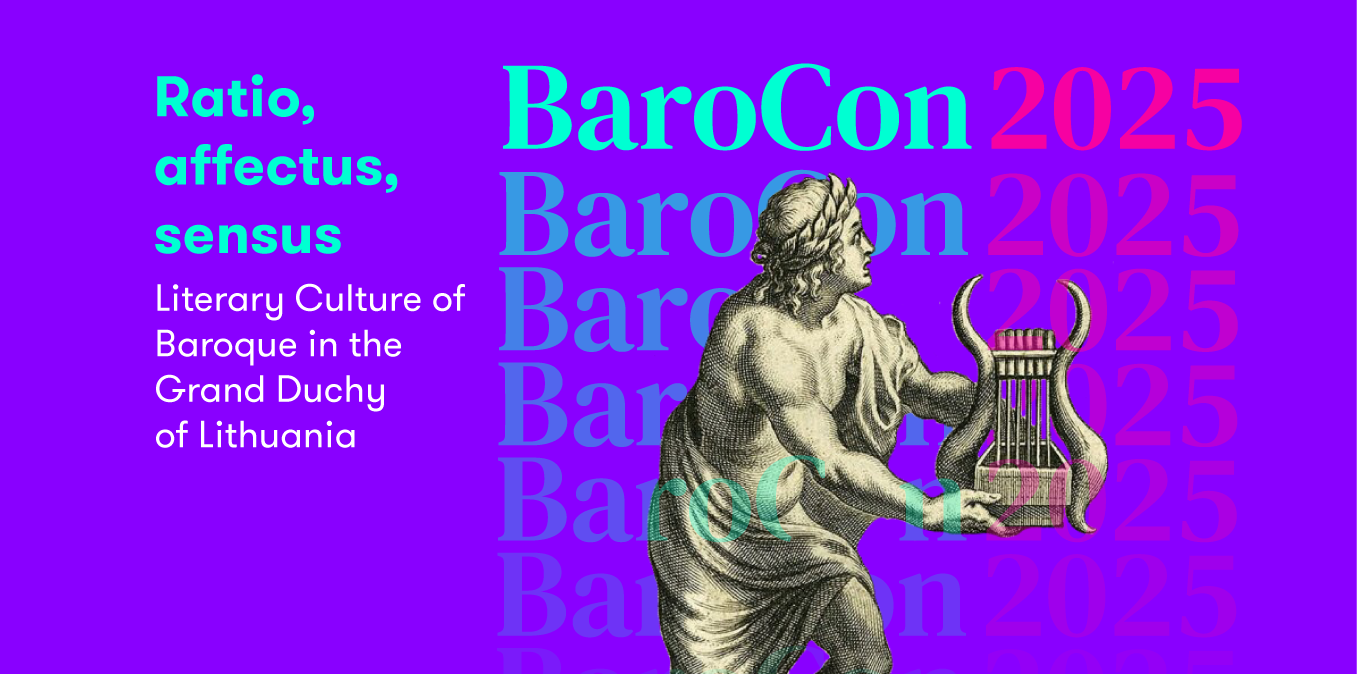Ratio, affectus, sensus: Literary Culture of the Baroque in the Grand Duchy of Lithuania
In 2025, we will commemorate the 400th anniversary of the first publication of Matheus Casimirus Sarbievius' most famous Latin poetry collection 'Lyricorum libri tres' (1625). This has led to 2025 being declared the Year of Baroque Literature in Lithuania. The eminent Jesuit neo-Latin poet of the Polish-Lithuanian Commonwealth, Sarbievius, has been hailed as the Christian Horace and the Sarmatian Horace. His theoretical thoughts on poetry and rhetoric are still highly regarded and have inspired new research on other concurrent themes and authors. This anniversary provides an opportunity to explore the extent and diversity of Baroque literary culture, which has seen a surge of interest in recent decades, both in the academic world and in popular culture. Therefore, the Institute of Lithuanian Literature and Folklore, together with the Faculty of Philology of Vilnius University, is organising an international academic conference "Ratio, affectus, sensus: Literary Culture of the Baroque in the Grand Duchy of Lithuania" on 25-27 September 2025 in the baroque city of Vilnius.
The aim of the multidisciplinary conference is to stimulate discussion on the literary culture of the "long seventeenth century" (from the end of the 16th century to the middle of the 18th century) in the Grand Duchy of Lithuania. This historical period, associated with dramatic changes and a general cultural crisis, is often described in contradictory terms and in constant tension between reason and senses, rigid structure and passions, classifications and impressions, etc. By embracing this contradiction, we invite an exploration of the theme in question through the lens of this dynamic interplay between reason (ratio), emotion (affectus) and the senses (sensus), which can be perceived in various genres of the period, such as poetry, biography, hagiography, rhetoric, private and public correspondence, and so on. The importance of the modern approach lies not only in what it can reveal about the Baroque in the Grand Duchy of Lithuania, but also about subsequent and contemporary literary culture, as scholars have demonstrated the continuing influence of a 'Baroque spirit'.
Keynote speakers

Ona Dilytė-Čiurinskienė
Senior Researcher, The Institute of Lithuanian Literature and Folklore
Prof Stephen Harrison
Professor of Latin literature, University of Oxford
Jakub Niedźwiedź
The Emblematic Turn in in the Grand Duchy of Lithuania in the 2nd half of the 17th Century
Jakub Niedźwiedź
Jagiellonian University
The Emblematic Turn in in the Grand Duchy of Lithuania in the 2nd half of the 17th Century
Keywords: emblems, literature of the Grand Duchy of Lithuania, Polish-language poetry, Dominicans, Michał Woyniłłowicz
In 1683, a collection of emblems was created in the Dominican monastery in Vilnius: The Sheaf of Glory of the Angelic Doctor St Thomas Aquinas. The authors dedicated their work to the patron of the Lithuanian Dominicans, the voivode of Trakai, Marcjan Aleksander Ogiński. This beautifully designed manuscript, now kept in the Vilnius University Library, seems unusual, since in the Grand Duchy of Lithuania it was the Jesuits who were keen to use emblems widely for their purposes. However, the Dominican book and other collections of emblems produced in the Grand Duchy of Lithuania at that time show that the emblematic imaginary permeated the literary culture of the country. Thus, the main purpose of my presentation is an attempt to answer a question: Can we speak of an 'emblematic turn’ in the literature of the Grand Duchy of Lithuania in the second half of the 17th century? I will focus on The Sheaf of Glory, but I will also include other emblematic cycles by Mikołaj Mieleszko, Zbigniew Morsztyn, Aleksander Teodor Lacki, Pylyp Orlyk, and emblems from the Jesuit College in Orsha.


